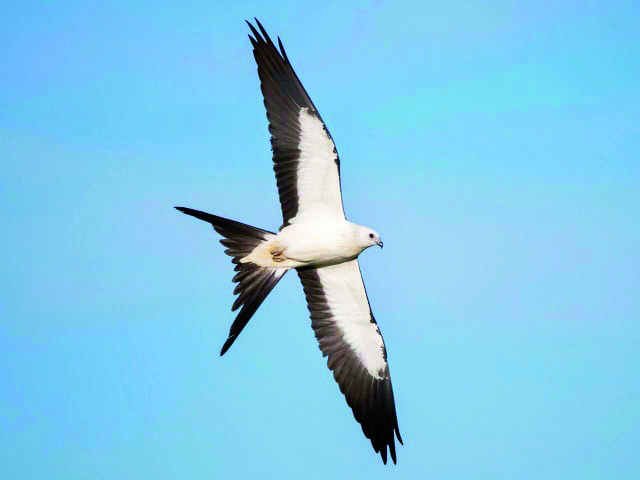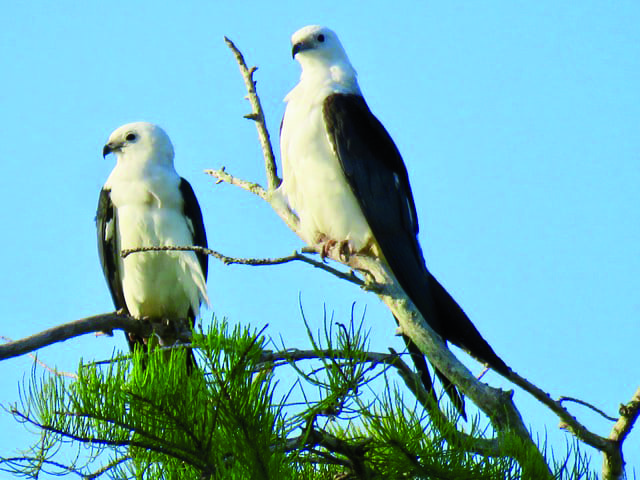By Capt. Chris Thalmann Contributing Writer

The gusty winds of early spring have mostly calmed by May as we enter a stretch of lengthy days and much warmer nights. South Florida summers are not for everyone, and many people will soon be headed for cooler climates if they haven’t already. Palm Beach County has been extending our tourism season for many years now. Still, wildlife represents some of our most reliable summertime visitors. If you’re into birds and birding, you might already know that Florida offers some great opportunities to see swallowtail kites all summer long. And if you’re not familiar with these birds, they’re easy to find and identify. Just keep an eye open along freshwater and brackish shorelines and look for the aerial acrobats. The swallowtail kite thrives in warm, tropical weather. Many winter in South America and then migrate to the lowlands of southern North America in February and March. Decades ago, these birds were found throughout the Southeast and even into the Midwest, but its range today is much more limited, mostly just Florida and a few coastal areas of the Southeast. Swallowtail kites are raptors, closely related to the red tailed hawk and other birds in the raptor family. But their body and wing shapes are far more streamlined and delicate, giving swallowtails the ability to both hover in mid-air and turn incredibly tight circles, all with barely a flap of their wings. Swallowtails are masters of soaring and spend most of their days aloft on air currents, swooping down to snatch meals from tree branches. Unlike the specialized diets of other
raptors, swallowtail kites feed on insects, frogs, snakes, lizards, small birds, and even certain berries and fruit in some locations. The key to seeing these beautiful birds is to know what you’re looking for. Adult swallowtail kites have a wingspan of about 4 feet and a very distinctive forked tail. Their head and underside of their body is a startling white, and their wings and tails are very dark grey or black. Swallowtails will most likely either be flying or perched in the upper branches of very tall trees, like cypress or slash pines. They rarely touch down on low branches, and almost never on the ground or water. If you want to see swallowtails, keep your eyes on the skies. In northern Palm Beach County, swallowtails can be seen along the Loxahatchee River, Juno Dunes Natural area, and occasionally along the Intracoastal shorelines north of MacArthur Beach State Park. They’re also easily spotted in freshwater areas like JW Corbitt Wildlife Preserve and the trails along the Loxahatchee Slough and Sandhill Crane Park. Swallowtails are rarely found alone. So, if you spot one take a minute to see if you can find its mate or a few members of its flock. Then just sit back and enjoy the air show. Hope to see you on the water!
Captain Chris Thalmann
Owner | Aqua Adventure Tours, Inc. • aquaadventuretours.com

